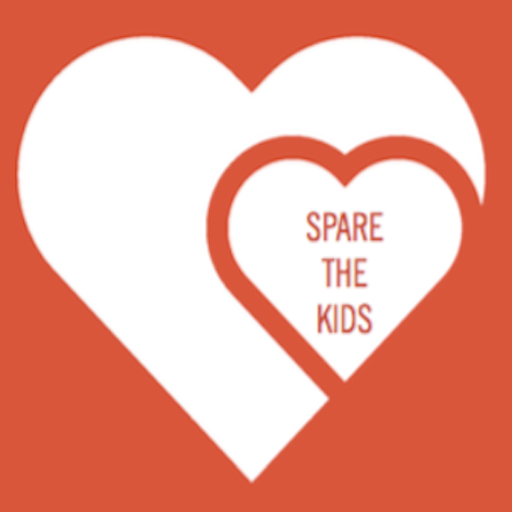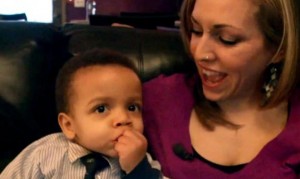“There is no place for black children in this world,” intellectual giant and civil rights doyen W.E.B. Du Bois lamented in 1920.
His hyperbolic use of “this world” conveys the mean-spiritedness of mainstream life to the first generations of free black children growing up in what he called “a sneering, cruel world” of Jim Crow restriction and racial violence.
Now, here we are in a new century, and black children are still growing up in an American society that fundamentally hates them.
Consider these recent examples:
On February 8, Joe Rickey Hundley, a 60-year-old white man who is the president of an aircraft parts company in Hayden, Idaho, allegedly slapped 19-month-old Jonah Bennett, the black adopted child of Jessica Bennett, a white woman. The incident took place aboard a Delta Airlines flight to Atlanta from Minneapolis. The baby’s mother told authorities that the she was trying to calm her son as the plane prepared to land. That’s when the drunken Hundley told her to “shut that nigger baby up” before striking the child across the face with his open hand and leaving behind a scratch.
It is 2013. President Barack Obama is in his second term. Against the odds, black people consistently manage to overcome the barriers of racism and inequality and achieve great things. But the other side of the coin is terrifying. Infuriating. Unacceptable.
If a toddler sharing an airplane seat with his mother is fair game for this kind of racialized abuse, where is there a safe place in America for black children? Not Chicago, where by the end of 2012, 270 schoolchildren had been killed by guns since 2007—70% of them black in a city that is 33% black.
Not Detroit, where 7-year-old Aiyana Stanley-Jones was “accidentally” gunned down in May 2010 by a police officer as she slept in her living room while cameras for the A&E true-crime program, The First 48, rolled.
Not Sanford, Florida, where Trayvon Martin was slaughtered last year by neighborhood vigilante George Zimmerman while returning home from the corner store with a drink and a bag of Skittles.
Not in Jacksonville, Florida, where Jordan Davis, who would have turned 18 this month, was shot dead at a gas station by a 46-year-old white man for allegedly playing loud music.
Not in Morrow, Georgia at a Cracker Barrel, where Tiffany Hill, an Army reservist mom was stomped, punched and called a “nigger” and a “bitch” by Troy West who took his with the young mother calling him out after he nearly hit her 7-year-old daughter in the face with a door.
Not the Atlanta suburb of Stone Mountain, Ga. at a Walmart, where a 61-year-old white man named Roger Stephens slapped a crying two-year-old black girl four or five times, telling her mother, “If you don’t shut that baby up, I will shut her up for you.”
And not in public schools across there country, where children are arrested for engaging in normal adolescent behavior: a 5 year old was arrested for having a temper tantrum in kindergarten; a 12 year old was arrested for scribbling on a desk, a 13 year old boy was arrested for burping, and a 5th grader arrested for giving a wedgie.
The race of the abuser or killer isn’t the main point. We all know that black-on-black crime remains at epidemic levels. But these high-profile race-motivated travesties cannot be ignored or swept aside. The truth is, the United States of America has never been a safe space for black children. The very notion of black childhood is tied up in the definition of black people as property, as sub-human, as dangerous, as the enduring metaphor of citizenship unworthiness. The politics around black bodies continue to drive the contemporary cultural narrative, from news to art to public policy.
Perhaps the most telling example was the 2010 anti-abortion campaign targeting black women with prominent billboards that said, “The most dangerous place for an African American is in the womb.” Never mind that the Rev. Al Sharpton helped to get one of these billboards taken down in New York City—this ultra-right-wing attack on black motherhood, childhood and life itself echoes the enduring sentiment that black life is inherently dangerous, problematic, wrong.
A slogan. A slap. A gunshot.
The litany of names of child victims keeps growing. Our hearts should be beyond breaking at this point, yet each new victim shatters them a bit more. The legacy of slavery and Jim Crow hasn’t left us—it has just gotten a makeover to fit into contemporary American life. A black child growing up in America today is not safe in the air, on the ground, in their neighborhood, at school, or asleep in their home.
“Shut that nigger baby up!”
At 19 months, baby Jonah might not have understood the racial slur, but he felt the slap. He felt the hatred, the contempt, and the racism. He may not yet have the language with which to process the history behind that moment, but I promise you, it is an awakening that he may never forget.
Today, black parents across America are in the same quandary that they were during slavery and the segregation era – ultimately they can’t protect their children. And as a white adoptive mother raising a black son, Jessica Bennett had to face the same painful and terrifying truth.
If you care about the safety of ALL children, I ask that you make your voice heard. Please sign and share this petition I started on change.org: https://www.change.org/petitions/us-district-court-of-atlanta-send-joe-rickey-hundley-to-prison



As a non-spanking parent, I appreciate the mission of your website. Regarding the treatment of Black children, I can ony imagine the heartbreak and outrage a parent must feel when her child is treated negatively because of his/her ethnicity. No child should ever have to face that, and the fact that many do, is deeply distressing.
I would like to comment on this:
<>
I have a different take on this. I believe that all life is sacred — no matter what the color of the baby’s skin, and wish the Black babies who have been aborted were alive today. How is decrying the ending of a Black fetus and the resulting lack of motherhood an attack on Black motherhood and childhood? In my mind, it is a cry to *uphold* such. According to the National Black Prolife Coalition (http://www.blackprolifecoalition.org/) 1,000 Black babies are aborted every day. Over 15 million have been aborted since 1973. That is a rate of 3 to 5 times higher than Whites or Hispanics.
Again, I appreciate your website. I just don’t understand how standing up and saying, “Stop killing Black babies in the womb” is in any way racist or derogatory – especially when the numbers don’t lie.
Hi there,
Thanks for your readership and support. I’m glad to hear that you find this web portal to be a worthy one. I too believe that life is sacred but I also believe in a woman’s right to choose. I think you may have misunderstood my point about the SoHo billboard. So let me point you to a piece I wrote sometime ago that can explain further. Here it is: http://www.frostillustrated.com/full.php?sid=8544
I’m happy to discuss further.
S. Patton
Thanks for your reply and the link. I do believe most white pro-lifers are genuinely concerned about Black babies and their mothers. (I consider myself in that category. 🙂
But I totally agree with you, that the pro-life movement needs to do a better job of showing concern for the Black children and mothers in poverty. There is a crisis pregnancy center in my area that does offer assistance, but you are right…there needs to be more.
Thanks again for your reply. It is good to discuss this with you.